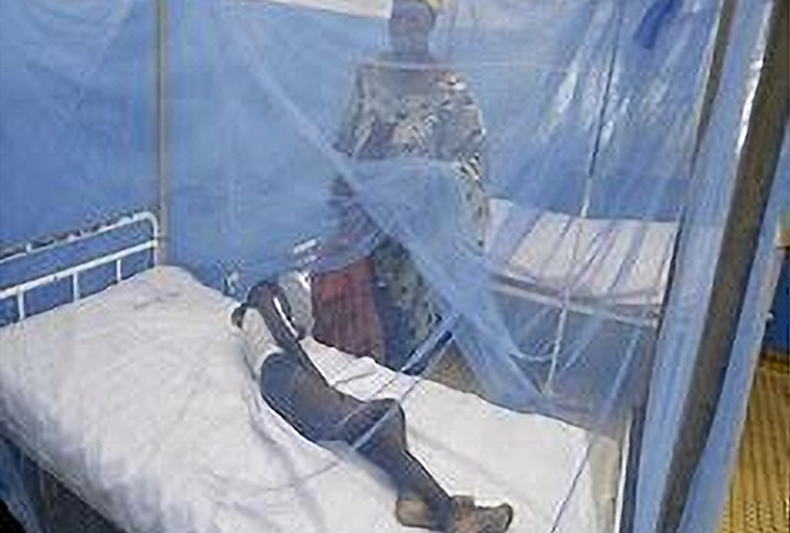Sickle cell disease is by far the most common inherited disorder in the world and three-quarters of the cases occur in Africa. In Nigeria, where it affects two out of every 100 children born, it causes suffering for innumerable patients and their families.
According to the Sickle Cell Foundation Nigeria, despite its importance, until now there have not been any dedicated sickle cell centres in Africa. This was partly because the very scale of the problem made it difficult to see how to start.
Sickle cell disorder is an inherited haemoglobin disorder comprising sickle cell anaemia (Hb SS) and some less prevalent but related conditions such as sickle haemoglobin C disorder (Hb SC) and sickle beta thalassaemia (Hb SBthal). The genes for these conditions arose by mutation but proliferated in areas where there is – or there was – a high incidence of falciparum malaria, the most lethal strain of malaria.
Desperate mother Aisha Goni Abdullahi told RNI reporter Zainab Alhaji Ali how hard and heart-breaking it was to live with sickle cell disease. Three of her 10 children were suffering from the disease.
She said she was anxious about the arrival of winter because the disease seemed to be worse at that time.
“I’m a mother of 10 children. Three of them have the disease. My first son has the disease, then another son was found to have the disease and the third, my youngest, has also proven positive for the disease.
“I am extremely worried because a fourth child has now started showing symptoms of the disease. One of my children had an operation but since then our living circumstances have changed and we cannot afford medical treatment for our children.”
Abdullahi said she used to take her children to the University of Maiduguri Teaching Hospital for treatment.
“We went there daily early in the morning and it always cost a lot of money. But we ran out of cash and had to be transferred to another hospital, the State Specialist Hospital, but that cost a lot of money too. My husband is very poor. Now we have resorted to using traditional herbal treatments. If we get some money we go back to the hospital.”
Abdullahi said she and her husband had bought land to build a house but they had been forced to sell it so that they could afford to treat the children which was costing them at least ₦10,000 a day.
“We live in a rented house now but we can’t even afford to pay the rent. Now the landlord has sold the house and we don’t know what our fate will be. We are hopeless. Life is a living hell.
“I cannot tell you how hard it is to see my children suffering like this. It just makes me weep.”
At the time of their marriage, there was no testing to see if either she or her husband had or carried the trait of the disease.
“Our marriage was traditional and no one knew anything about genetic testing. I would advise any couple now who intend to marry to go for testing first. Living with the sickle cell disorder is very hard. If I had known what I know now about the disease, I would not have got married and had children.
“Couples should do whatever they can to avoid passing on the disease. Life is just too difficult. My children need constant assistance and even I need support. Every day I feel traumatised. You don’t know what’s going to happen next. Every single minute of every day I am concerned about the status of my children’s health. I wouldn’t wish this on anyone and people should take every precaution they can to avoid having to deal with sickle cell disease.
- According to the Mayo Clinic, sickle cell anaemia is one of a group of inherited disorders known as sickle cell disease. It affects the shape of red blood cells, which carry oxygen to all parts of the body.
Red blood cells are usually round and flexible, so they move easily through blood vessels. In sickle cell anaemia, some red blood cells are shaped like sickles or crescent moons. These sickle cells also become rigid and sticky, which can slow or block blood flow.
There’s no cure for most people with sickle cell anaemia. Treatments can only relieve pain and help prevent complications associated with the disease.
Symptoms of the disease include anaemia, episodes of extreme pain, swelling of the hands and feet, frequent infections, delayed growth or puberty and vision problems.
The Mayo Clinic advises every person who shows the symptoms to see their healthcare provider immediately.
It says because children with sickle cell anaemia are prone to infections, which often start with a fever and can be life-threatening, parents should seek prompt medical attention for a fever greater than 38.5°C.
For a child to be affected, both mother and father must carry one copy of the sickle cell gene – also known as sickle cell trait – and pass both copies of the altered form to the child.
If only one parent passes the sickle cell gene to the child, that child will have the sickle cell trait. With one typical haemoglobin gene and one altered form of the gene, people with the sickle cell trait make both typical haemoglobin and sickle cell haemoglobin.
Their blood might contain some sickle cells, but they generally don’t have symptoms. They’re carriers of the disease, however, which means they can pass the gene to their children.
For a baby to be born with sickle cell anaemia, both parents must carry a sickle cell gene.
Some of the complications of the disease include strokes, acute chest syndrome, pulmonary hypertension, organ damage, splenic sequestration, blindness, leg ulcers, gallstones, deep vein thrombosis and pregnancy complications.
The clinic says if you carry the sickle cell trait, seeing a genetic counsellor before trying to conceive can help you understand your risk of having a child with sickle cell anaemia. A genetic counsellor can also explain possible treatments, preventive measures and reproductive options.
AISHA SD JAMAL






